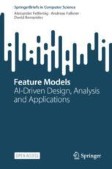Search
Search Results
-
Feature constraint reinforcement based age estimation
As one of the critical biological characteristics of human age, the face has been widely studied for age prediction, which has broad application...

-
Hybrid feature constraint with clustering for unsupervised person re-identification
Unsupervised person re-identification (Re-ID) has better scalability and usability in real-world deployments due to the lack of annotations, which is...

-
LTM: efficient learning with triangular topology constraint for feature matching with heavy outliers
Image feature matching, which aims to establish correspondence between two images, is an important task in computer vision. Among image feature...

-
Combining deep subspace feature representation based IKPCANet and jointly constraint multi-dictionary learning for facial expression recognition
The limitation of the small-scale expression samples generally causes the performance degradation for facial expression recognition-based methods....

-
Feature selection under budget constraint in medical applications: analysis of penalized empirical risk minimization methods
Feature selection is a crucial step when building supervised predictive models. In many medical applications, features are associated with costs. For...

-
Semi-supervised feature selection based on pairwise constraint-guided dual space latent representation learning and double sparse graphs discriminant
Semi-supervised graph based sparse learning investigates both label related information and inherent characteristic in data when only a small number...

-
An adversarial training-based mutual information constraint method
As an auxiliary loss function, the mutual information constraint is widely used in various deep learning tasks, such as deep reinforcement learning...

-
Distributional constraint discovery for intelligent auditing
Constraint discovery in relational databases aims to find constraints that express dependency relationships among a set of attributes and has...

-
Feature Modelling
In this chapter, we describe the basis of Feature Models (FMs) using graphical as well as textual representations. We introduce a smartwatch FM that...
-
Generative adversarial text-to-image generation with style image constraint
Most text-to-image generation works focus on the semantic consistency and neglect the style of the generated image. In this paper, a novel...

-
Relationship constraint deep metric learning
AbstractDeep metric learning (DML) models aim to learn semantically meaningful representations in which similar samples are pulled together and...

-
Dual-stream network with cross-layer attention and similarity constraint for micro-expression recognition
Micro-expression recognition (MER) is a pivotal research area within human emotion analysis. However, the fleeting, subtle, and complex nature of...

-
Sparse feature selection via local feature and high-order label correlation
Recently, some existing feature selection approaches neglect the correlation among labels, and almost manifold-based multilabel learning models do...

-
Global and local structure projection learning for image feature extraction
The feature extraction method based on projection learning has been widely studied and achieved good results in practical application. However, most...

-
A multi-constraint transfer approach with additional auxiliary domains for IoT intrusion detection under unbalanced samples distribution
The Internet of Things (IoT) refers to a vast and interconnected network comprising smart objects with comprehensive capabilities. Unfortunately, the...

-
Unsupervised feature selection via multiple graph fusion and feature weight learning
Unsupervised feature selection attempts to select a small number of discriminative features from original high-dimensional data and preserve the...
-
Semantic-Based Implicit Feature Transform for Few-Shot Classification
Few-shot learning aims to recognize instances from previously unseen classes based on a very limited number of examples. However, models often face...

-
Non-linear Feature Selection Based on Convolution Neural Networks with Sparse Regularization
The efficacy of feature selection methods in dimensionality reduction and enhancing the performance of learning algorithms has been well documented....

-
Multi-resolution feature perception network for UAV person re-identification
Person re-identification (re-id) with unmanned aerial vehicles (UAVs) is of great significance in intelligent surveillance. However, recognizing a...

-
Stronger Heterogeneous Feature Learning for Visible-Infrared Person Re-Identification
Visible-Infrared person re-identification (VI-ReID) is of great importance in the field of intelligent surveillance. It enables re-identification of...

